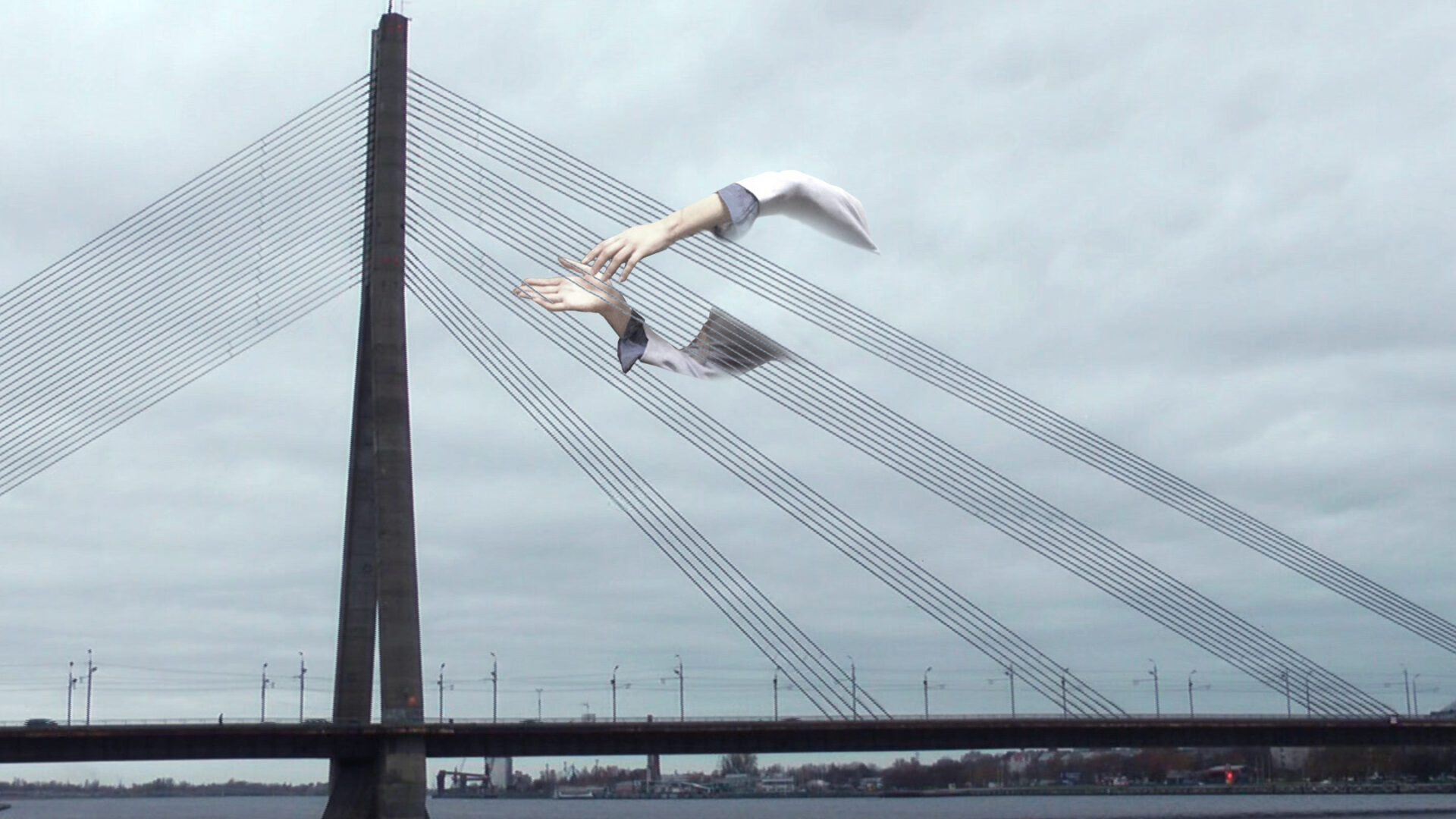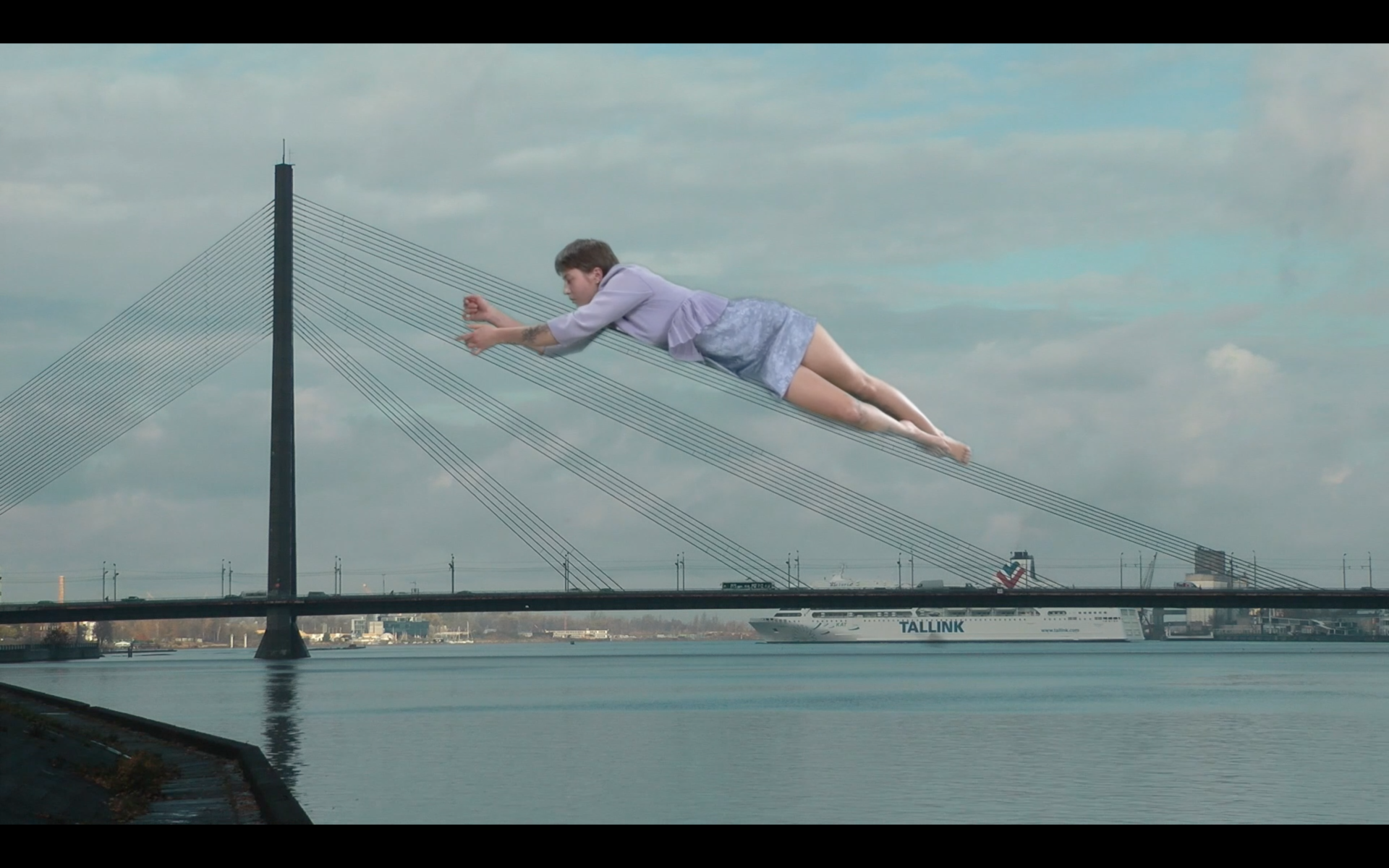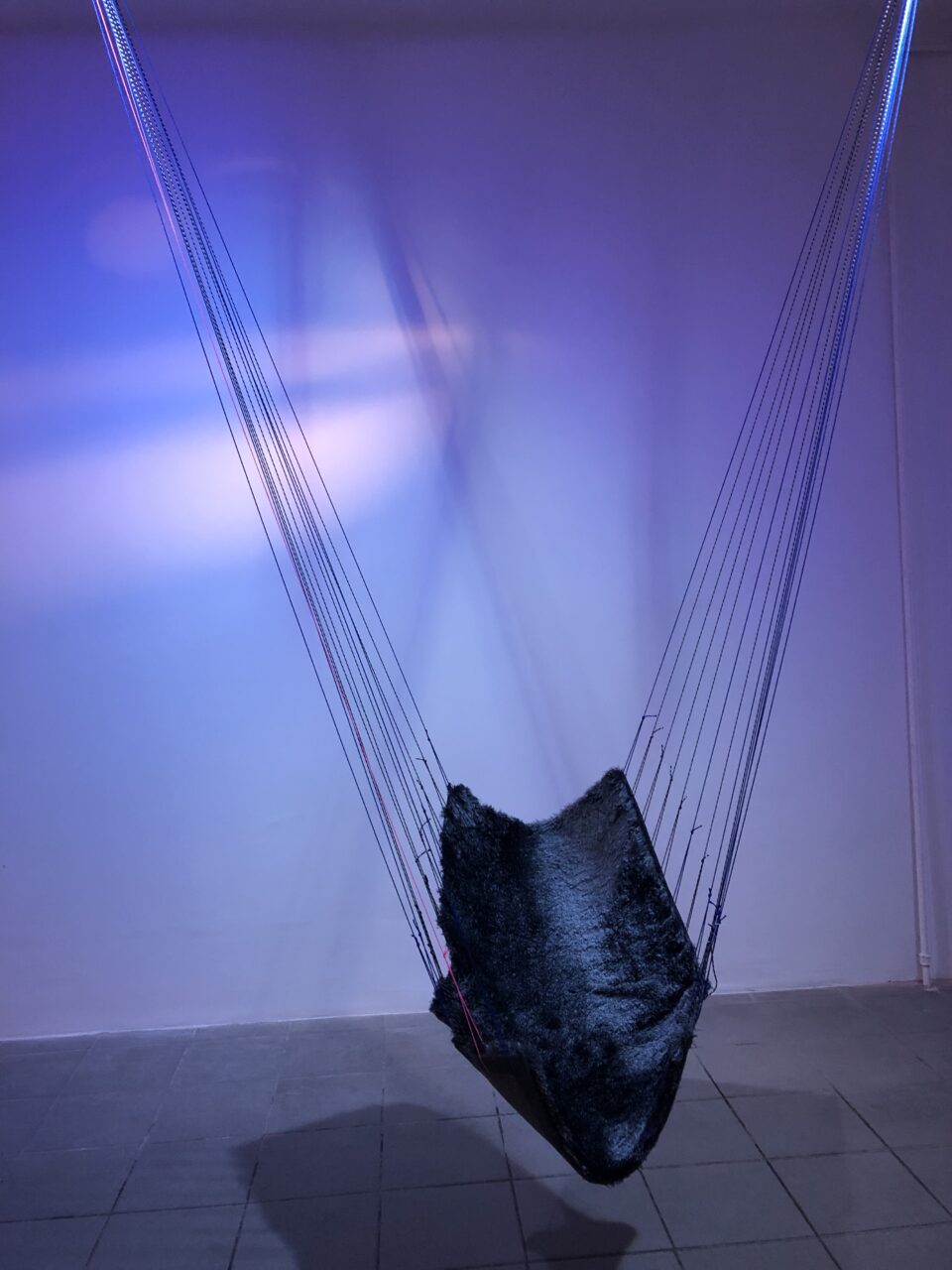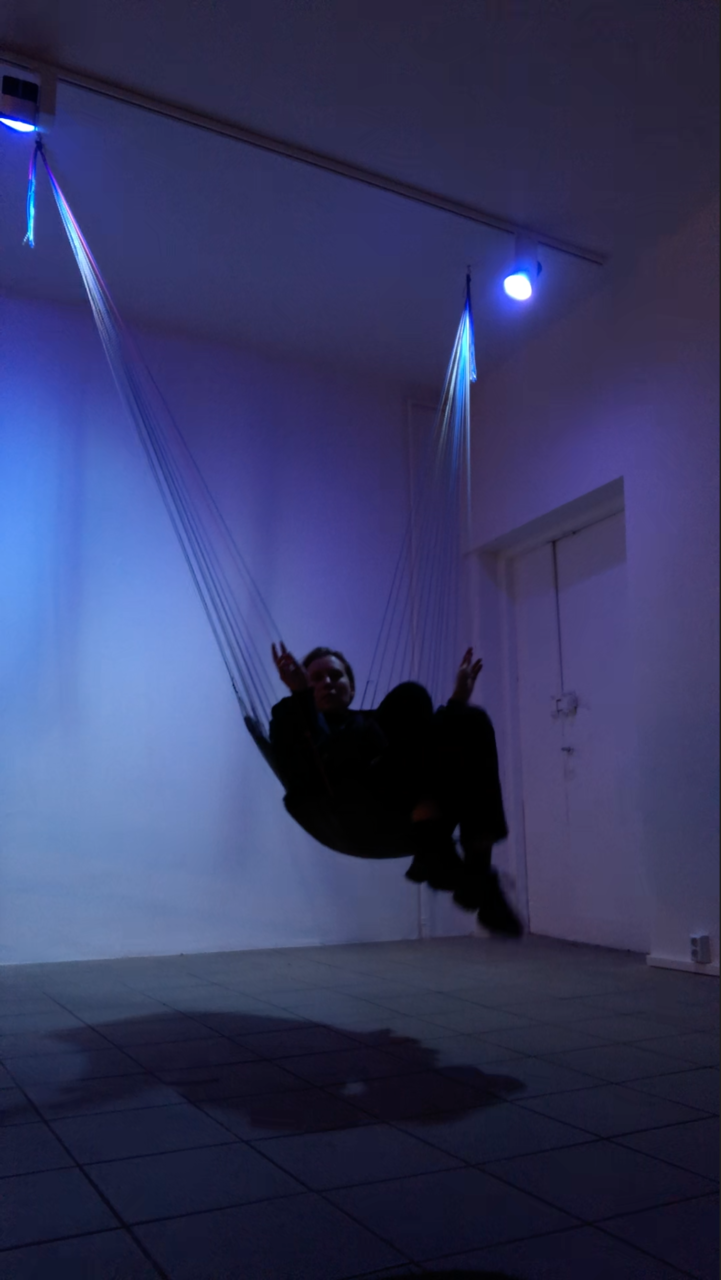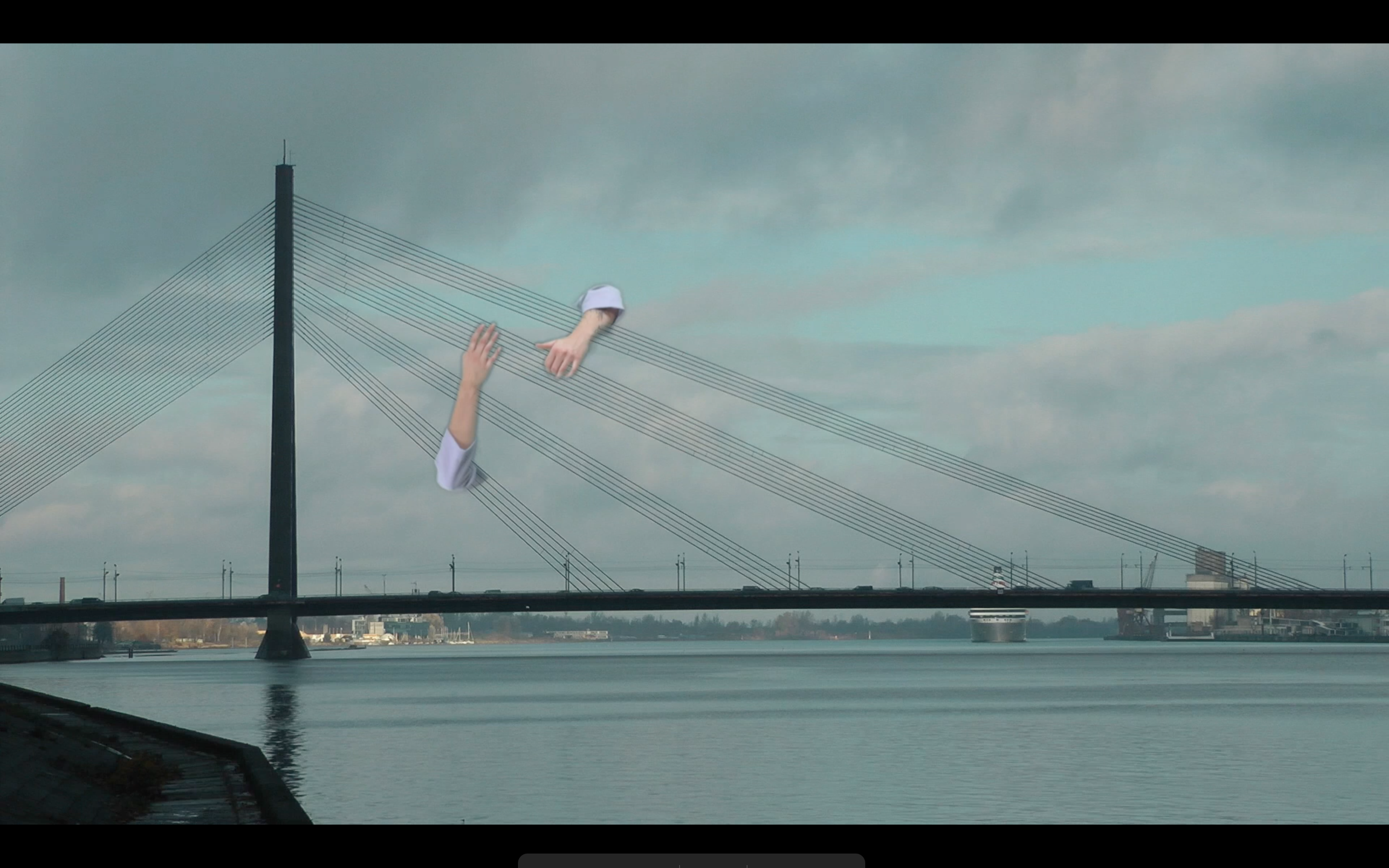2020, Pilot gallery, Riga, Latvia. Video (0’8,43), hammock.
The installation was made tying together Latvian fiction from film and mythology and coveting it with the urban environment in the city Riga.I am trying to investigate the marks that are left on the imaginative field from the heritage of fiction and architecture. In my work I try to revisit these layers of history and popular fiction in order to understand my identity and relation to my hometown. How the perception and fantasy is influenced both by physical – architectural surroundings and by fiction introduced by myths and film.
Vanšu Bridge (Latvian: Vanšu tilts) in Riga is a cable-stayed bridge that crosses the Daugava river in Riga,The word vanšu refers to the cables suspending its deck. For me cables are associatively connected to the strings of a harp, therefore I decided to turn the bridge structure into a music instrument.
Cable bridge in Riga that is built in 1981, four years later, in 1985 a fantasy film called Sprīdītis was made. I would describe the film as of rather dogmatic. I was most affected by the special effects, how the video montage was used to depict Latvian mythological character – Wind mother, goddess of the wind, spacial effects made her appear in the sky. In my work I chose to place a performer on top of the bridge mimicking the appearance of the goddess. I ask my performer to play the bridge.
Cable Bridge character is played by a close friend and a collaborator Viktorija Vazņeva.
The installation consists of a video and a handmade hammock, while seeing the video, the spectator is invited to sit in the hammock. By placing body weight on it the strings of the hammock are being tightened and can be played with fingers. My intention by placing the spectator in a hammock was to allow the spectator to bodily experience similar sensation as the character in the film – to be uplifted from the ground.
Video has been included in Latvian video art archive.
